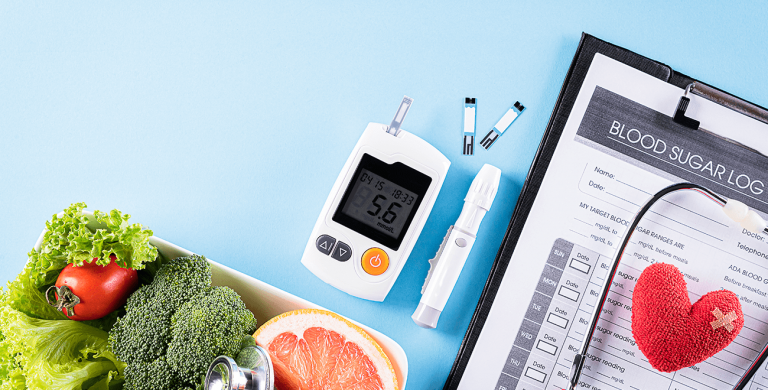Singapore has declared a nation-wide war against diabetes! Learn more about the condition and how we can lead a diabetes-free life.
by Tan Jia Hui
Medically Reviewed by M Thiviya, R.N.
In the 2017 National Day Rally, Prime Minister Lee Hsien Loong deemed diabetes as a “health crisis” among Singaporeans. One in nine Singaporeans has diabetes, with seniors being more prone to the condition. In fact, 30% of Singaporeans above the age of 60 are diabetic.
Facing these sobering statistics, it is important for us to understand more about this condition, our risk factors, and useful tips to prevent diabetes.
What is Diabetes?
Diabetes occurs when our body is unable to produce enough insulin or does not use insulin effectively. This results in high glucose levels, as insulin is the hormone that helps us turn blood glucose into energy. While diabetes itself is not life-threatening, it can lead to various health complications if not well-managed.
For most of us, our blood glucose levels fall between the healthy range of 4 mmol/l to 7.8 mmol/l. Having a blood glucose level higher than 11mmol/l is a possible indication of diabetes.
Before diabetes strikes, there is a stage where some would find themselves in — pre-diabetes. Pre-diabetes occurs when your blood sugar levels are higher than normal but insufficient to be diagnosed as type 2 diabetes. Having pre-diabetes could increase our chances of developing type 2 diabetes, heart diseases and stroke.
The good news is pre-diabetes can be reversed with lifestyle changes, such as a healthier diet and regular exercise. Learn more about how you can reverse pre-diabetes here. Diabetes itself, however, cannot be reversed or cured and would need to be managed well to prevent further health complications.
Often doctors may prescribe medication or insulin jabs for those with diabetes, so manage and regular their blood sugar levels. These are usually lifelong medications that need to be taken daily.
The Different Types of Diabetes
You may have heard of the different types of diabetes — most commonly, type 1 and type 2 diabetes. But what exactly are they and how do they differ from one another?
Type 1 Diabetes
One of the two commonly known types of diabetes, Type 1 diabetes is caused by the inability of our pancreas to produce insulin. Previously known as insulin-dependent diabetes or juvenile diabetes, this condition is often hereditary and cannot be prevented. Most are diagnosed in their childhood. However, amongst the diabetic population, it accounts for the minority with only 1 in 10 being affected.
Type 2 Diabetes
Unlike its Type 1 cousin, Type 2 diabetes usually strikes those who are above 40, overweight and physically inactive. Also termed adult-onset diabetes, over 90% of those diagnosed with this type of diabetes are above 40 years old.
Type 2 diabetes occurs when our body becomes resistant to insulin or is unable to produce enough of it. By leading a healthy and active lifestyle, we can reduce our risk of Type 2 diabetes.
Gestational Diabetes
During pregnancy, the hormonal changes in some moms-to-be may cause a rise in blood glucose levels. This can cause previously healthy women to be diagnosed with gestational diabetes during their pregnancy.
Up to one in five women are at risk of gestational diabetes, which may lead to preterm labour and other maternal complications. Upon childbirth, the glucose levels often return to normal but these women may still have a higher chance of developing type 2 diabetes later in their lives.
8 Risk Factors of Diabetes
While type 1 diabetes is inherited, type 2 diabetes – the most common form of diabetes – is largely preventable. Know these eight factors which increase our risk of diabetes:
Age above 40
Our diabetes risk increases as we age. In fact, over 90% of people with diabetes are above 40 years old.
Inactive Lifestyle
An inactive lifestyle reduces the insulin sensitivity of our cells and may also increase our BMI, putting us at a higher risk of diabetes.
High Blood Pressure
Having blood pressure over 140/90 mm Hg may increase our risk of developing diabetes and other health complications.
Gestational Diabetes
Women who gave birth to a baby over 4kg or had gestational diabetes previously are at a higher risk of diabetes. In fact, if someone has a previous diagnosis of gestational diabetes, their risk of progression to type 2 diabetes increases by up to 60%.
Impaired Glucose Tolerance
Being pre-diabetic puts us at a higher risk of developing diabetes.
Abnormal Blood Lipid Levels
High levels of “bad” cholesterol and low levels of “good” cholesterol increase our risk of diabetes.
Body Mass Index above 23kg/m2
Having a higher body mass index (BMI) tends to indicate that you have a higher amount of body fat. Fatty tissues increase cell resistance to insulin and therefore increases our risk of diabetes.
Family History
If you have a parent or sibling with diabetes, your risk of developing the condition increases.
Preventing Diabetes
Understanding these risk factors not only helps in estimating our risk. More importantly, we can make a conscious effort to change and reduce our risk of diabetes.
Start by adopting these three lifestyle habits to keep diabetes at bay.
Be Aware of Our Diabetes Risk
One in three Singaporeans with diabetes is not aware of their condition. This could potentially place their health in danger as early detection, monitoring, and treatment are key in preventing the development of complications which can result in kidney failure or even heart problems.
Make it a point to monitor your health. If your age is between 18 and 39 years old, take a minute to find out your diabetic risk through the Diabetes Risk Assessment. For those aged 40 years and above, get a health screening for diabetes at least once every three years, at only $5.
Adopt a Healthy Diet
Contrary to popular belief, eating sweets do not directly cause diabetes. The increase in BMI from an unhealthy diet that’s high in sugar, however, could put us at a higher risk of diabetes.
You are what you eat. Balance your diet with plenty of fruits, vegetables and whole grains to keep it low in fats and sugar. This will help us maintain a healthy body weight and BMI lower than 23kg/m2. Read our food guide for people with diabetes to learn more about what foods you should eat or avoid.
Exercise Regularly
Adopt an active lifestyle through regular exercise. Besides increasing our insulin secretion and reducing blood glucose levels, exercise also helps in the maintenance of a healthy weight and BMI as well as rewarding the body with a host of other health benefits.
Beat Diabetes One Step at a Time!
Understanding diabetes is only the first step. To stay diabetes-free, let’s take action and adopt a healthy active lifestyle today!
At Tiq by Etiqa, we’re always looking for ways to help you be prepared for life’s surprises and inevitabilities, while empowering you to “Live Unlimited” and take control of your tomorrow. In our effort to do that, we have partnered with Homage, an award-winning personal care solution that combines curated and trained care professionals with smart technology. This article is contributed by Homage and first appeared here. All information is correct as at the date of publication on 6 April 2022.







